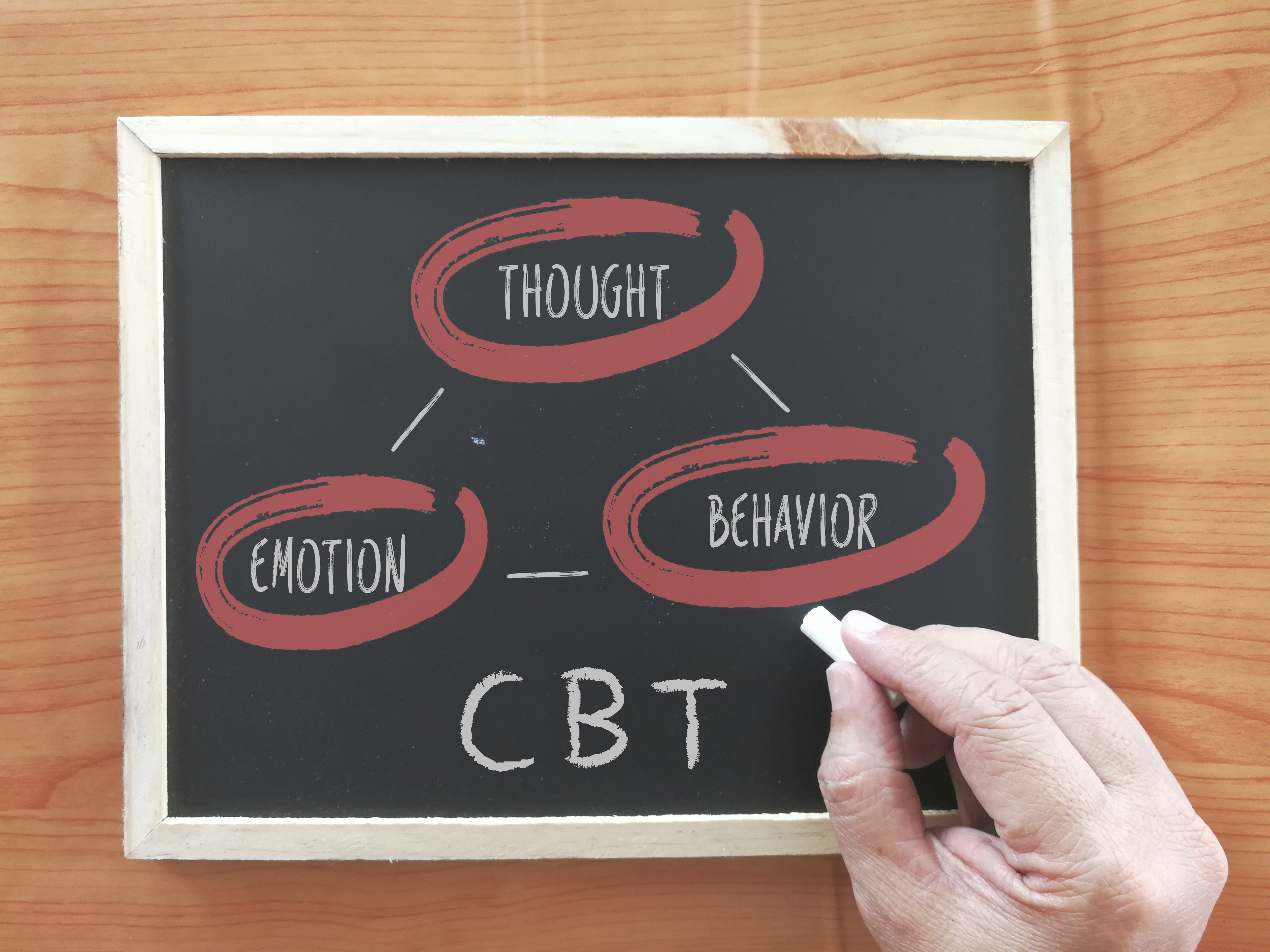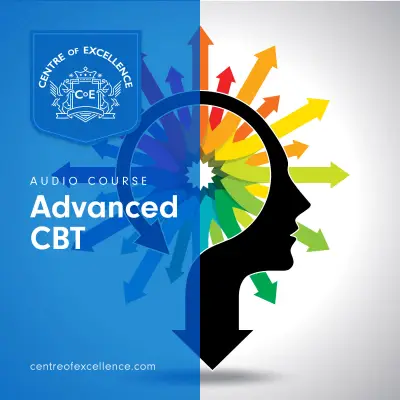Understanding Cognitive Behavioural Therapy (CBT) can be a game-changer for many. It's a form of therapy that has shown remarkable success in treating various mental health conditions, from depression and anxiety to insomnia and beyond.
Let's dive into what CBT is, how it works, and why it might be the key to unlocking a healthier, happier you.
Jump to:
Understanding CBT
Cognitive Behavioural Therapy, or CBT, is a type of psychotherapy that focuses on changing unhelpful cognitive distortions and behaviours, improving emotional regulation, and developing personal coping strategies that target solving current problems. In simpler terms, it's a way to help you deal with your problems by changing the way you think and behave.

How Does CBT Work?
CBT works through a structured program that helps you identify specific problems and learn new ways of thinking about them. It’s grounded in the concept that your thoughts, feelings, and actions are interconnected and that changing negative thoughts and behaviours can lead to improvements in your feelings and daily lives.
It involves working with a therapist to identify thought patterns and behaviours that are causing you problems and then learning practical strategies to change those patterns. This therapy has been extensively researched and is highly effective for a wide range of issues.
What Conditions Does Cognitive Behavioural Therapy Treat?
Cognitive behavioural therapy is effective at treating a variety of mental health conditions, including depression, anxiety, panic, stress, phobias, obsessive compulsive disorder, psychosis, bulimia, post-traumatic stress disorder and bipolar disorder. Furthermore, it can also be used to treat low self-esteem, anger, insomnia and fatigue. Let’s look at some of these treatments in more detail:
CBT and Depression
When it comes to treating depression, CBT is often a go-to method. Cognitive therapy for depression focuses on challenging and changing unhelpful cognitive distortions and behaviours, improving emotional regulation, and developing personal coping strategies. It's about identifying those dark clouds of thought and learning practical ways to clear them away.
CBT and Anxiety
Similarly, cognitive behavioural therapy with anxiety works by helping people identify and challenge their fears and anxious thoughts. Through CBT, you learn that your thoughts can influence your feelings and behaviours, and by changing those thoughts, you can reduce anxiety levels significantly.
The CBT Model of Anxiety and Depression
The CBT model for treating anxiety and depression focuses on the idea that thoughts can create feelings and behaviours. By identifying negative thought patterns, you can begin to change the way you feel and act, even in situations that previously triggered anxiety or depression.
Cognitive Behavioural Therapy for Insomnia (CBT-I)
CBT-I is a specialised form of CBT designed to treat insomnia. This involves identifying and changing the thoughts and behaviours that are causing sleep problems. CBT-I has been shown to be highly effective in helping people develop healthy sleep habits and attitudes that promote restful sleep.
What Makes CBT Unique?
Cognitive behavioural therapy is different from other therapies as it identifies the patient’s specific problems and creates targeted goals in order to solve them. A therapist works in collaboration with the patient to treat current thoughts and behaviour rather than tackling issues that have occurred in the past.
For example, a patient who has previously gone through a difficult divorce may be struggling with feelings of failure and hopelessness, staying at home instead of going out and meeting new people.
The Five Steps of CBT
Cognitive Behavioural Therapy (CBT) is a journey through self-discovery and transformation that involves several key steps. Each step is designed to help you understand and alter the way you think and act in response to life's challenges. Let's dive into these steps, exploring how they contribute to the journey towards a more positive and empowered self.

1. Identification of Problematic Situations or Conditions
The first step in CBT is about recognising the specific issues that are causing you distress. This could range from identifiable mental health conditions like anxiety, depression, or insomnia to broader challenges such as stress at work, relationship difficulties, or general dissatisfaction with life.
The goal here is to pinpoint the areas of your life that need attention and change. By identifying these problematic situations or conditions, you set the stage for targeted therapy. It's about naming your battles so you can effectively strategise how to win them.
2. Awareness of Thoughts, Emotions, and Beliefs about These Problems
Once you've identified the problems, the next step is to become more aware of your thoughts, emotions, and beliefs surrounding these issues. This stage is important because it's often your automatic thoughts or knee-jerk reactions to situations that contribute to emotional distress.
CBT teaches you to become an observer of your mind, noticing patterns of thinking that may be unhelpful or inaccurate. This increased awareness is the foundation for change, as you can't change what you don't notice.
3. Identifying Negative or Inaccurate Thinking
With heightened awareness, you can start to identify specific negative or inaccurate thoughts that are contributing to your problems. These might include "catastrophising" (expecting the worst), "black-and-white thinking" (seeing things as only good or bad), or "over-generalisation" (viewing a single event as a never-ending pattern of defeat).
This step is about challenging the validity of these thoughts and recognising that they are not facts but perceptions that can be changed.
4. Reshaping Negative or Inaccurate Thinking
After identifying these thoughts, the next step is to begin reshaping them into more accurate and constructive patterns. This involves questioning the evidence for your negative thoughts, considering alternative viewpoints, and testing out the reality of negative predictions.
It's about replacing unhelpful thoughts with more balanced and helpful ones. For instance, instead of thinking, "I'll never be able to solve this problem," you might learn to think, "I haven't figured it out yet, but I can try different strategies and ask for help." This process of reshaping thoughts is at the heart of CBT, empowering you with a more flexible and resilient mindset.
5. Changing Behaviour Accordingly
The final step is about translating these changes in thought into changes in behaviour. This might involve facing fears rather than avoiding them, taking small steps towards your goals, or practising new skills in communication or stress management.
As your thinking becomes more adaptive, your behaviours naturally follow suit, leading to improved mood and overall functioning. This step is where the benefits of CBT become evident, as you notice yourself responding differently to the situations that once caused you distress.

The Benefits of Cognitive Behavioural Therapy
Let's delve into the many benefits of CBT, highlighting its impact on personal development and mental wellness.
- Provides practical strategies for coping with daily life challenges, offering tools that remain useful long after therapy concludes.
- Often effective for those who haven't found relief solely through medication, offering an alternative or complementary path to wellness.
- Flexible in delivery, accommodating individual preferences through one-on-one sessions, group therapy, digital platforms, and self-guided materials.
- Typically requires a shorter time commitment than other forms of psychotherapy, making it a time-efficient option for achieving mental health goals.
- Enhances self-awareness and emotional intelligence by teaching people to identify, question, and change unhelpful thoughts and behaviours.
- Promotes resilience and adaptability, equipping people with the skills to handle future stresses and challenges more effectively.
- Can be tailored to treat a wide range of mental health conditions, including depression, anxiety, PTSD, and OCD, among others.
- Encourages a proactive approach to mental health, empowering people to take control of their emotional well-being.
- Offers a structured yet flexible framework for therapy, providing clear goals and measurable outcomes for both therapists and clients
- Can improve overall quality of life by reducing symptoms of mental health conditions, leading to better relationships, work performance, and social engagement
Frequently Asked Questions About Cognitive Behavioural Therapy
Can You Do CBT by Yourself?
While it's most effective in a therapeutic setting, there are also ways to practice CBT techniques on your own. This can be through guided self-help books, online courses, or apps designed to teach CBT principles. However, for complex issues, working with a professional is recommended.
Is CBT Good for Overthinking?
CBT is particularly effective for those who find themselves caught in loops of overthinking. By focusing on identifying, challenging, and changing negative thought patterns, CBT provides practical tools for managing and reducing the cycle of overthinking. It teaches strategies to ground thoughts in reality and reduce rumination, making it a powerful approach for those struggling with this issue.
What 3 Things Does CBT Focus On?
CBT primarily focuses on the interconnectedness of thoughts, emotions, and behaviours. It emphasises:
- Cognitive Processes: How we think influences how we feel and act.
- Emotional Regulation: Managing and understanding our emotions can help us respond to situations more effectively.
- Behavioural Patterns: Changing our actions can influence our thoughts and feelings, leading to improved mental health.
How Long Does It Take for CBT to Work for Anxiety?
The duration of CBT treatment can vary depending on the individual's specific situation and severity of anxiety. Typically, a CBT course might last anywhere from 5 to 20 sessions, with many people beginning to see improvements within the first few sessions. Consistency and engagement with the process significantly impact its effectiveness and speed of results.
What Questions Are Asked in CBT?
CBT sessions may involve questions aimed at uncovering and understanding thought patterns, such as:
- "What was going through your mind when you started feeling anxious?"
- "How did that thought make you feel?"
- "What evidence supports or contradicts this thought?"
These questions help identify and challenge unhelpful thoughts and beliefs.
What Is the Difference Between CBT and Counselling?
While CBT is a structured, goal-oriented therapy focusing on the present thoughts and behaviours, counselling often involves talking about and exploring past experiences and emotions. Counselling may not always aim for immediate behavioural changes but rather offers a supportive space to understand and resolve emotional difficulties.
What Is CBT in Bed?
CBT for insomnia, or CBT-I, is a specific application of CBT aimed at addressing the thoughts and behaviours that contribute to sleep difficulties. It includes strategies such as sleep restriction, stimulus control, and sleep hygiene to improve sleep patterns and quality.
What Are the 7 Skills of CBT?
The seven key skills of CBT involve:
- Self-monitoring: Keeping track of your thoughts, feelings, and behaviours.
- Cognitive Restructuring: Identifying and challenging negative thoughts.
- Behavioural Activation: Engaging in activities that boost your mood.
- Problem-Solving: Developing strategies to deal with challenges.
- Exposure Therapy: Gradually facing your fears in a controlled way.
- Relaxation Techniques: Learning methods to reduce stress and anxiety.
- Assertiveness Training: Practising how to express your needs and boundaries effectively.
Why Does CBT Not Work for Me?
CBT might not work for everyone due to various factors, including the severity of the condition, individual readiness for change, and the quality of the therapeutic relationship. It's important to communicate with your therapist about any concerns or lack of progress. Sometimes, a different therapeutic approach or a combination of therapies may be more effective.
Does CBT Actually Work?
Numerous studies have shown CBT to be effective for a wide range of mental health conditions. Its effectiveness is particularly well-documented for anxiety and depression, but it also helps with other issues like stress, phobias, and insomnia.
Is CBT a Coping Strategy?
CBT is more than just a coping strategy; it's a comprehensive therapeutic approach that teaches individuals to fundamentally change the way they think, feel, and behave in response to life's challenges. While coping strategies are part of what CBT teaches, the therapy aims for lasting change at the cognitive level.
What Is the Success Rate of CBT?
The success rate of CBT can vary, but it is generally considered to be one of the most effective forms of psychotherapy, especially for anxiety and depression. Success rates can improve with active participation and application of CBT techniques outside of therapy sessions.
Is CBT Free?
While there may be free CBT resources and tools available, professional CBT therapy typically involves a cost. However, some healthcare systems offer CBT as part of their services, and there may be low-cost options available through community mental health programs.
How Do I Start Practicing CBT?
Starting CBT can be as simple as reaching out to a licensed therapist trained in CBT techniques. Alternatively, exploring online courses, reading books on CBT, and using CBT-oriented self-help tools can also provide a good introduction to practising CBT principles.
Recommended for you!
Best SellersStudy CBT for £29
We're excited to offer our Cognitive Behavioural Therapy Diploma Course at the exceptional price of £29, saving you over £100! Just click the link below to get started.













